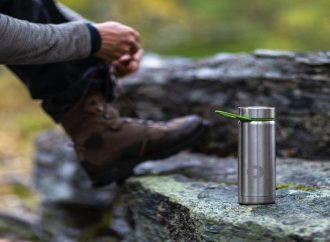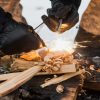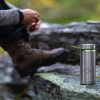According to microscopic traces of wood ash, the earliest known fires were created many thousands of years ago – and since then, it has proven to be the cornerstone of every industry, invention, and lifestyle of every human being on the planet. When SHTF, you’re going to be more dependent on fire than ever –
According to microscopic traces of wood ash, the earliest known fires were created many thousands of years ago – and since then, it has proven to be the cornerstone of every industry, invention, and lifestyle of every human being on the planet.
When SHTF, you’re going to be more dependent on fire than ever – there’ll be no access to Clipper lighters or survival matches unless you’ve stockpiled them in advance, and you definitely won’t be able to turn the hob on to cook your meal unless you have a gas stove. So, what can you use instead?
Well, as easily as it was discovered, it can be replicated. The first fires, and the billions that have followed, took place in the great outdoors – which is probably where you’ll be located. However, your ancestors didn’t have access to this expert survival blog, so here’s a ton of ideas of what to use as tinder, how to use them, and where they can be found.
Stay warm and dry, and you may just see tomorrow.
Leaves
Easily the most accessible material on this list, you can find leaves in almost every area with a bit of greenery, from front gardens to the Galloway Forest. And the good news? They’re all as useful as each other.
So whether you’re scaling tall elms or just picking a few off the ground, your fire isn’t too far away. The only issue is drying the leaves – but this can be completed by pressing them between two dry materials like a pillowcase, and leaving them for a few days or so.
Although leaves are accessible, and effective, their downfall can be the length of time they take to be ready if they aren’t already dry.
It’s always a good move to prepare as far in advance as you can, and replenish your supply when you use some of it up. If there’s been particularly dry weather from September to March, then you may be in luck and be able to scoop large handfuls from the ground.
You can use them as they are, or also break the really dry ones down into a powder which can catch a spark to start the makings of your main fire.
Lint
Lint from your tumble dryer is a great type of tinder kindling. Instead of emptying this into the bin during the good times, place it neatly into a cardboard box or plastic bag and store it up for survival situations. Lint can catch a spark, and it doesn’t take a lot to get it going.
Ensure that your lint is kept in a dry place, and you can even press it down into a smaller block to save space. In times of trouble, you can find your way into a launderette or other people’s abandoned homes and take their lint too.
Cattails
Cattails – also known as reeds, bulrushes or reed mace – are found everywhere growing on near bodies of water, they look like a big brown sausage. It is a flammable source of tinder, however be warned that if you have lots it can all ignite at the same time, burn quickly and then be gone in a matter of seconds.
Always have some better material such as dried grass to hand to capture that initial blaze and make the most of it.
A good way to use cattails is to pack them into an old washed out tin can and then nestle it on your fire, and before long it will have dehydrated and turned into a form of charcoal which will act as a better tinder compared to the fluffy cattails, similar to how char cloth is made.
The fluff from a dandelion or milkweed will have the same effect, but be sure to gather a lot of it as ignition is instantaneous and it burns up very fast.
Bark
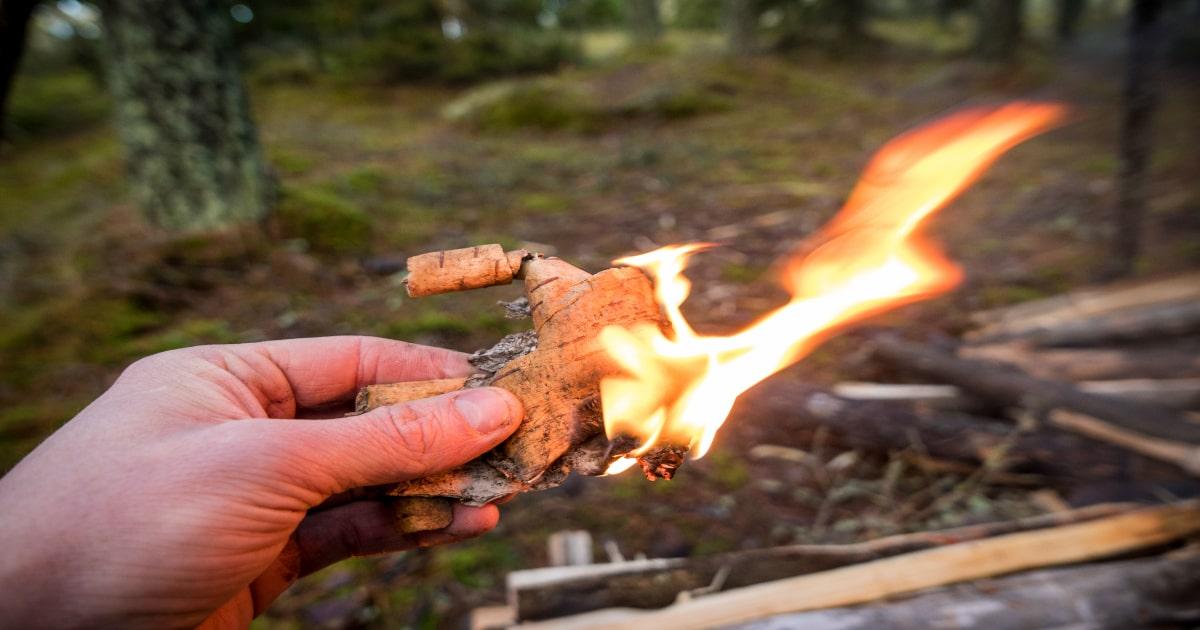
If you can find leaves, then you can probably find bark – but if not, you don’t need to be Ray Mears to recognise a tree when it’s in front of you.
And when you do reach a tree, take a knife to it, and strip the bark off. Cedar trees have a fibrous bark that is excellent to use, and just needs to be teased apart ready to receive that spark.
There’s two layers, outer and inner, which can both serve as good tinder for your flames. Although most will work, some are better than others – but generally, bushcraft experts tend to swear by birch.
If you take some silver birch bark and gently scrape your knife along it multiple times it will create a fine powder. This has a high concentration of oils which make the white colour, and once you have a suitable pile of a few grams, hit it with a spark and it will light enough for you to make a fire from.
The best part is that it’s one of the UK’s most common trees – so when SHTF, there’s no need to worry about going cold.
Shaved Wood
If you find dry wood laying around on the forest floor, then taking a knife and curling pieces off it and shaving the wood will give you a lovely tinder. If you can get it very fine, then it’s more likely to catch a spark from a ferro rod.
Another good way to get wood shavings is by paying a visit to a woodyard, or checking in people’s sheds who have had animals. Anyone who has or had a rabbit or other small furry pet is more than likely going to have wood shavings or sawdust somewhere.
Pinecones also work very well as tinder if you break them up by standing on them a few times and loosen the fibres which bind them together.
Dried Grass
This is very self-explanatory, although you may only be able to source it properly in the summer in a bale form left by farmers, or from protected spaces like barns or sheds.
Whilst straw seems just like hay or dried grass, it is not, and when trying to create a fire from scratch avoid it as it can have a shiny texture which has high moisture content. If it’s bone dry and old, you might have a chance.
You can always find grass yourself and dry it yourself, in a similar process to the leaves mentioned earlier. In winter grass dies back and if can be gathered in clumps. In summer, grass will only take few days to dry out completely to be able to kindle your fire. Dead goldenrod is also a great tinder to use.
If you spot a bird’s nest up high, it is likely to be filled with dry material gathered such as grass, small twigs and mosses. Try lighting your fire inside a nest for a pre-made natural fire starting bundle. Just be sure it’s empty before you remove it from the tree!
Paper
Most tinder comes from the natural environment around you, but you can use man-made paper to your advantage – and it’s probably the most effective material on the list. From magazines and newspapers to post it notes and letters, there’s a whole world of paper available to preppers.
In films like Children of Men or The Road, one of the most common items you’ll see around them is bundles of old newspaper. After all, we all know the expression – one man’s trash is another man’s tinder for the night.
Regular printer paper can be hard, but if it’s scrunched up small multiple times then it goes soft and is a much better medium for creating fires with. Tissue paper and toilet paper are good too, however in SHTF you’ll need to save toilet paper for its intended use.
Pine Straw
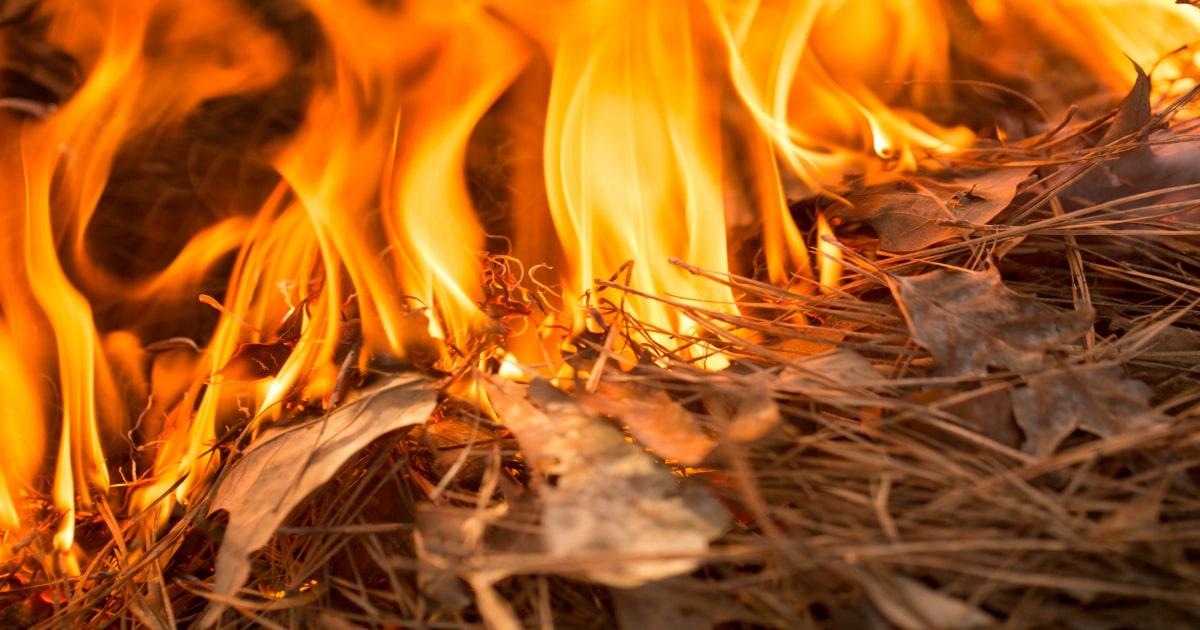
This is basically the needles that can be found scattered all around the base of pine trees. If you’re in Scotland you’ll have no trouble finding these, but do make sure that they are properly dried out first before attempting to use them. It burns quickly, so have another better source of fuel to hand once you’ve got it kindled.
Fat wood can also be gathered from pine trees, and due to the high concentration of oils it’s a perfect way to start a fire when scraped into a fine powder.
Feathers
Light, multipurpose and found in abundance, especially if you’ve downed a pigeon for your tea, feathers will ignite quickly but won’t hold the flame for long, so always have a backup with dried grass or moss like Old Man’s Beard at hand to catch that spark.
Feathers also smell bad when burned so avoid breathing in until you’ve got your fire lit. Feathers can be collected in a small pouch whenever you find them from a fox kill or just lying around, ready to use for tinder whenever you need it.
Cotton
It’s almost impossible to grow cotton in the UK, as we simply don’t offer the environment it needs to thrive, but it is readily available in a wide range of forms including buds, balls and pads. We highly recommend stocking up, as it’s so cheap it’ll hardly make any impact in your budget, and can be squashed to take up little room in your survival cache.
What’s more, you can soak cotton balls in a fuel medium like Vaseline, wax, WD40, lard or alcohol hand sanitizer before storage so that it will ignite in a split second when hit with a spark from a ferro rod or lighter that’s out of gas.
The fluff from certain feminine hygiene products and cigarette butts also works well too. If you have some cotton or jute string in your preps, you can unravel it and pry apart the fibres to create a fluffy bundle.
Crisps
With such a high energy content, crisps such as Doritos are a good way to kindle a fire, but you do need that initial flame to get them going. Pile a few up and put some kindling at the bottom, light one on the corner and it will burn for a minute or so, giving you ample time to pass that fire onto a better kindling material.
Steel Wool
Metal can start a fire? Sure it can! Take some steel wool, the finer the better, and a nine-volt power battery. You know the ones we’re talking about, those that are rectangular in shape and when you put them on your tongue it starts to tingle with the flow of electric.
Have some dried grass to hand, touch the wool with the nodes of the battery and you will see it heat up and catch fire. Place the dried grass next to it and set it ablaze. Just remember not to store the steel wool next to the battery. Don’t breath in the gases either.
Dry Animal Poo
Handling animal poop is probably (and hopefully) one of the things you want to do the least, but it is one of the most useful natural materials out there – and as a prepper in a disaster situation, you have little to no choice.
Rabbit and cow poo are very common throughout the UK, and depending on the type of disaster you faced, there’s a chance of an infinite supply. Use the poop from herbivores only, animals that eat grass, which has dried out completely and break it up to reveal the dried material inside for your fire.
Visit areas you’d expect these species to frequent, like woods, forests, fields and other green locations, and start collecting. If you’re gathering in the summertime, it’s probably dried, too – meaning it’s ready to use.
Fungi

Another one of the UK’s hidden gems, it’s quite unsightly – but that doesn’t mean it’s useless. There’s a huge number that naturally grow all across Great Britain, and as it’s famously very durable, there’s a high chance of it surviving almost any disaster, both natural and man-made.
Of course, you need to look out for the dangerous ones that are poisonous or release hallucinogenic fumes. Check out this useful guide that distinguishes between the types, with additional information about where it can be found.
One of the best kinds of fungus to use is Hoof Fungus, you’ll find it growing on trees and is easily identifiable by its shape – yes, it looks like a horse’s hoof.
When dried, this soft layer inside this fungus – called amadou – will catch a spark from a ferro rod and smoulder away ready for you to pick up with better dried material to get the fire going.
A fungus known as King Alfred Cakes is black and grows on ash trees which have died. When open you can see the dried rings inside, and if you put a spark there it will begin to smoulder.
With a few blows it will ignite and grow really hot, giving you the perfect tinder you need, especially if you need to carry it a long way as it stays lit for a very long time.
Party Candles
Not strictly a tinder but it will help with your fire-lighting ability no end. Purchase a pack of those special birthday cake candles that reignite when you’ve blown them out, and no matter what weather you’re trying to light a fire in they will just keep on catching fire.
Char Cloth
You can buy these ready made or create your own, but a char cloth is essentially piece of material that has been placed inside a tin and left on the fire. All the moisture goes from it and you’re left with a black piece of cloth that will readily catch a spark which ignites it and can be transferred to a bundle of kindling.
Summary
Just because your Zippo’s got no fuel, and you’re out of survival matches, it doesn’t mean you have to freeze to death or ‘enjoy’ cold beans straight from the tin. You can use a wealth of things that are very easily accessible, and free. Just make sure you leave enough time for them to dry out, if they aren’t already suitable for burning.
If you find yourself struggling for tinder, then you can always fall back on pre-bought items you can add to your bug out bag such as tinder boxes, fire plugs and fire cubes which light with a single spark.







